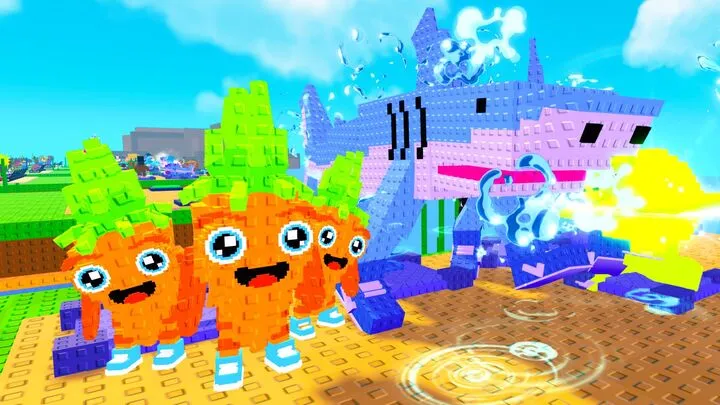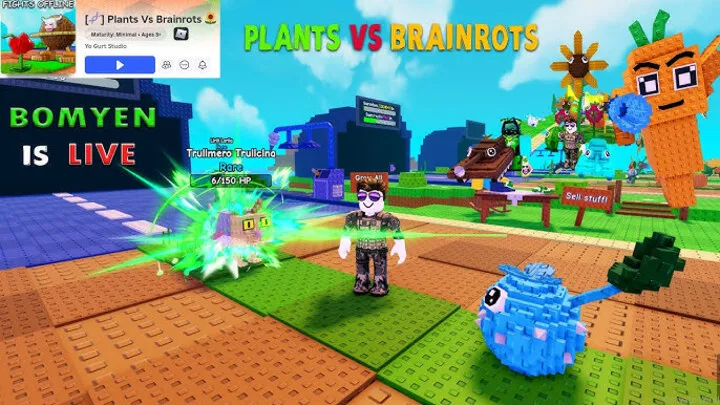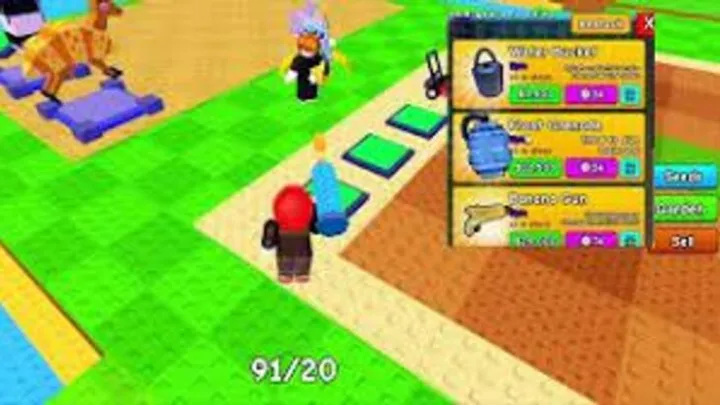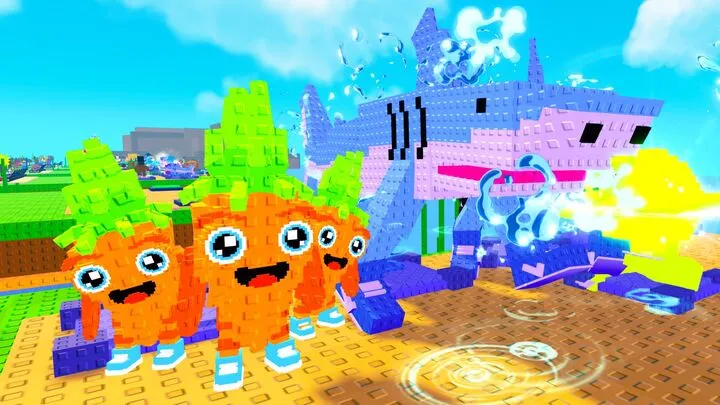Introduction
Welcome to Plants vs Brainrot, the chaotic survival strategy game where plants battle against waves of mind-twisted creatures known as the Brainrots. Inspired by classic tower defense gameplay but layered with resource management and evolving enemies, this title challenges both your reflexes and your planning skills.
If you’re new to the game or struggling to survive beyond the first few nights, this comprehensive beginner’s guide will walk you through everything you need to know — from setting up your first defense, understanding plant types, managing sun energy, to mastering advanced tactics that will keep your garden thriving against every rot-infested horde.
1. Learn the Core Mechanics
Before jumping into advanced tactics, grasp the basics that make Plants vs Brainrot so engaging.

Resource (Sun Energy) Management
Every action — from planting to upgrading — costs sun energy. Prioritize generating sun through Sunflowers or Solar Vines early in each round. Without proper energy flow, your defense will collapse before the third wave hits.
Lane Defense
The battlefield is divided into lanes. Each Brainrot zombie attacks from a specific lane, so proper placement of plants ensures coverage and balance. A single unprotected lane can lead to instant defeat.
Progressive Difficulty
Each night grows harder. New types of Brainrots appear, each with distinct resistances, movement patterns, or attack styles. Always read the enemy preview before starting a night.
2. Know Your Plant Types
A successful garden defense requires understanding what each category of plant contributes.
- Offensive Plants – Deal direct or area damage (Peashooter, Torchvine).
- Defensive Plants – Block or absorb enemy damage (Wallnut, Barrier Root).
- Support Plants – Heal allies, buff attack speed, or reveal hidden enemies.
- Control Plants – Slow, freeze, or disable Brainrots temporarily (Icy Fungus).
- Economy Plants – Generate extra sun for future plays (Sunflower, Solar Vine).
Balancing these categories ensures you’re never underpowered or overwhelmed.
3. Building Your First Team
When starting out, your goal isn’t maximum power — it’s survival efficiency.
Recommended Starter Setup
- Sunflower – Generates early sun.
- Peashooter – Core damage dealer.
- Wallnut – Essential protection.
- Cherry Bomb – Panic button for emergencies.
- Snow Pea – Adds slow control effect.
This basic layout ensures stability and flexibility through the first five nights.
4. Master Sun Economy
Sun is the lifeblood of your defense. Poor economy management leads to quick defeat.
- Plant early: Get two to three Sunflowers immediately.
- Protect your economy: Don’t place sun plants in vulnerable lanes.
- Upgrade strategically: Replace normal Sunflowers with Twin Sunflowers when possible.
- Use cheap damage plants: During early waves, prioritize low-cost plants to save sun for emergencies.
A good rule of thumb: for every three damage plants, maintain at least one economy plant.
5. Understand Enemy Types

Brainrots aren’t all the same — some are sneaky, others explosive. Recognize patterns early.
- Walker Brainrot – Slow, basic unit.
- Crawler Brainrot – Moves in short bursts, bypasses spikes.
- Shielded Rot – Carries debris, resistant to frontal attacks.
- Exploder Rot – Self-destructs upon death, damaging nearby plants.
- Spectral Rot – Invisible until revealed by certain plants.
Knowing which Brainrots appear in a given night allows you to pre-plan defensive positions.
6. Map Exploration & Environmental Strategy
Not every map is the same. Some terrains add unique effects.
- Swamp Maps – Reduce movement speed for both plants and enemies.
- Desert Fields – Faster sun generation but lower plant durability.
- Night Forests – No natural sunlight, forcing reliance on energy generators.
- Rooftop Gardens – Limited space, requiring careful plant selection.
Adapt your strategy to the map’s terrain; sometimes swapping a single plant makes the difference between victory and defeat.
7. Upgrade System
Progression in Plants vs Brainrot comes through upgrading plants.
- Level 1–3: Basic stat boosts (HP, attack).
- Level 4–6: Unlock new abilities (burns, splash, stun).
- Level 7–10: Passive bonuses like sun efficiency or lane synergy.
Focus on upgrading Sunflowers and mainline DPS plants first — they provide the biggest return on investment.
8. Synergy & Team Composition
Plants that complement each other perform exponentially better.
Example Synergies
- Torchvine + Repeater Vine: Fire combo for double damage.
- Icy Fungus + Wallnut: Freeze enemies while blocking.
- Shockroot + Laser Pod: Chain-stun and burst waves.
- Solar Vine + Meteor Bloom: Late-game energy and AoE synergy.
Always ensure your team has balance — raw power alone won’t save you against mixed Brainrot waves.
9. Surviving Boss Battles
Boss encounters are checkpoints testing your mastery of mechanics.
Key Boss Tips
- Study the boss attack pattern before committing plants.
- Keep emergency sun stockpiled for last-minute explosions or heals.
- Place blockers strategically — bosses often crush multiple rows at once.
- Use stun plants like Shockroot to interrupt key boss skills.
Patience and adaptability win boss fights, not brute force.
10. Long-Term Strategy & Replayability

Once you master the basics, Plants vs Brainrot becomes a game of experimentation.
- Mix and match plants for new synergies.
- Revisit earlier levels with new unlocks to earn higher ratings.
- Participate in Night Challenges or Endless Mode for bonus rewards.
- Keep an eye on seasonal events that add limited-time plants and cosmetics.
The beauty of Plants vs Brainrot lies in its replay value — no two runs ever feel identical.
Conclusion
Plants vs Brainrot rewards smart strategy, efficient resource use, and creative experimentation. Whether you’re laying your first row of Sunflowers or facing a horde of mutated bosses, remember that success comes from synergy and timing — not just raw power.
Master the basics, build smarter defenses, and evolve your strategy every night. With patience and planning, your garden will not just survive — it will become an unstoppable force against the Brainrot plague.

















